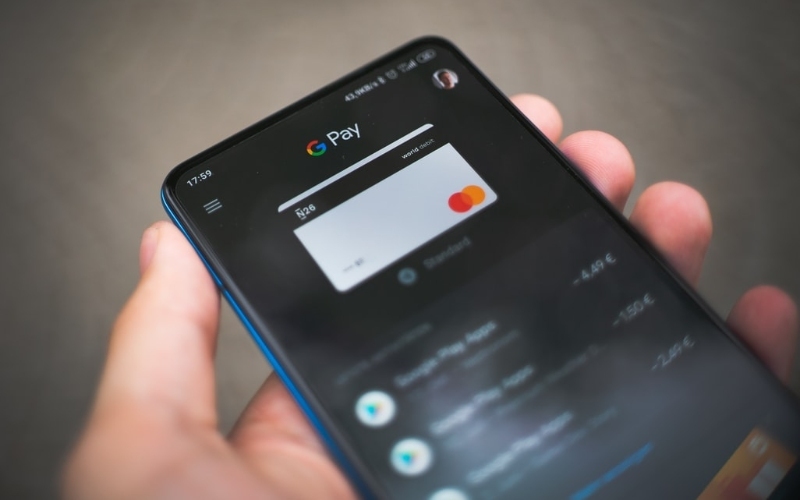
Scam Information
Contact Us
- [email protected]
- +972-888-8888
- About Us
- Contact Us

We Can Help You Recover Your Money
Home » The Ultimate Guide To Protect Yourself From Online Social Media Scams
With the increase in social media popularity, the popularity of scams too has followed. When it comes to social media and all its potential, it is revolutionary. However, these scams keep getting the best of people, which is why it is crucial you are aware of the threats they pose. Scams that began on social media have been on the rise for several years. The total reported losses from these thefts in 2019 were $134 million. However, reported losses hit new highs in the first half of 2020, totaling roughly $117 million. During that period, alleged social media frauds frequently involved online shopping, romance scams, and claims of financial relief or income prospects.
The FTC’s list is topped by complaints about e-commerce sites that don’t deliver the goods. With the epidemic, these reports soared, and nearly one in every four reports to the FTC cited a social media hook. In 94 percent of responses that identified a specific platform, people referenced Facebook or Instagram, with many indicating they ordered after seeing an ad. These fake adverts appear legitimate and can be carefully targeted to reach a specific demographic. Scammers might erase unfavorable reactions to their advertising or postings, preventing people from becoming aware of the hoax. About half of all romance scam reports to the FTC since 2019 involve social media, usually Facebook or Instagram. However, since the pandemic began, more people than ever have reported losing money to romance scams. That includes the scams that start with a social media message or friend request.
People are reporting an increase in social media messages offering grant money and other incentives, ostensibly to aid people during the pandemic. Scammers pretend to help individuals in need of money, but they’re after your money, your information, or both. These communications may originate from friends who have been hacked or who are unaware that the offer is a fraud, as scammers frequently instruct users to forward their comments to others. As people look for new ways to make money, social media has seen an upsurge in reports about multi-level marketing (MLM) organizations and pyramid scams, such as blessing circles and other giving schemes. In the second quarter of 2020, the figures had increased by a stunning fivefold. Many of these job offers were said to include exaggerated statements about potential pay, which is typically a red sign.
Some MLM businesses are illegal pyramid scams that rely on recruiting new members rather than selling products to stay afloat. The majority of people who join an MLM make little or no money, whereas those who join a pyramid scam usually lose everything they invest. Scammers’ low-cost access to whole networks of people may assist the many scams that appear on social media. The fraudster can use a fake profile, pretend to be someone you know, or even hijack a legitimate account. They can sneak into a virtual community you trust by masking their identity, making you more likely to believe them. The first step in being able to combat a crisis is being aware of it. This article includes the history of such scams and how they have evolved over time. It will educate you about the type of scams for different applications and, most of all, how you can prevent yourselves from falling into the wrong hands.
If you want to keep yourself safe from falling victim to internet scams, then you’re definitely at the right place. We can give you the best practices in identifying red flags as well as help you in recovering your stolen money from scammers!

What percentage of your time do you spend on social media? Many of us have come to rely on social media platforms like Facebook, Instagram, and Twitter to stay in touch, keep up with the news, and even shop. However, as their popularity grows, so does the possibility of fraud. These types of scams are becoming more complex, and they frequently use brand logos and bogus terms and conditions to make them appear legitimate. The most frequent types of social media fraud and how to protect yourself online are discussed here. Internet fraud is a sort of cybercrime fraud or deception that involves the concealment of information or the provision of false information with the intent of defrauding victims of money, property, or inheritance. Internet fraud is not a unique, distinct crime; rather, it encompasses a wide range of illegal and illicit activities carried out in cyberspace.
It is distinguished from stealing, however, because, in this situation, the victim freely and intentionally provides the offender with information, money, or property. It is further distinguished by the fact that it involves offenders who are separated in time and space. Be wary of abbreviated URLs that conceal the entire address of a website. They’re fairly frequent on Twitter, and although they may well take you to the correct website, there’s always the risk that they’ll redirect you to one that installs malware. Be cautious about anything you click on, check to see if the post is typical of the account that published it, and make sure you have real-time spyware and malware protection. It should go without saying that you should be cautious about who you connect with on social media. People begging for your friendship and requesting money may appear to be something that only happens on American TV shows, but it is actually rather prevalent.

The fraudster could even impersonate one of your friends or send you a phishing link that leads to a harmful website. Online quizzes that claim to tell you your personality type, which celebrity you resemble, or give you a too-good-to-be-true prize include hidden dangers. They frequently include terms and conditions that allow third parties to sell the information you provide. It also implies that the app developer can learn a lot about you from your profile, friends, and IP address. Short quizzes advertised on social media platforms such as Facebook and Twitter should be avoided. These apps frequently request personal information from you. A seemingly legitimate program may inadvertently download malware onto your device. Before downloading new apps, consider if you trust the source, conduct your homework, and stay away from third-party app stores; instead, use the one provided by your phone carrier.
Social media’s inception was a double-edged sword, altering both how people communicate and how cybercriminals target businesses. The Internet Crime Complaint Center (IC3) received almost 300,000 complaints, according to the FBI’s 2017 Internet Crime Report. In 2017, victims of internet fraud lost approximately $1.4 billion. Cybercrime costs the global economy $600 billion, or 0.8 percent of global GDP, according to a study performed by the Center for Strategic and International Studies (CSIS) and McAfee. There are many different types of online fraud. It includes everything from email spam to internet fraud. Internet fraud can occur whether it is partially based on the use of Internet services or is entirely dependent on the use of the Internet. According to a new report from the Federal Trade Commission (FTC), a growing number of Americans are being scammed on social media.

In 2021, individuals lost $770 million to social media scams, accounting for over one-fourth of all fraud losses for the year. As new sorts of frauds involving cryptocurrency and online shopping grew more popular, the FTC said, that number has climbed 18 times from the $42 million in social media fraud reported in 2017. As a result, many younger consumers are being conned, with adults aged 18 to 39 reporting fraud losses at a rate 2.4 times higher than adults aged 40 and up. Scammers have obviously discovered that one of the most profitable locations to commit fraud is on social media. More than 95,000 fraud victims stated they were first approached on social media in 2018, which is more than double the figure in 2020 and 19 times the number in 2017. The Internet Crime Complaint Center (IC3) received almost 300,000 complaints, according to the FBI’s 2017 Internet Crime Report. In 2017, victims of internet fraud lost approximately $1.4 billion.
Cybercrime costs the global economy $600 billion, or 0.8 percent of global GDP, according to a study performed by the Center for Strategic and International Studies (CSIS) and McAfee. There are many different types of online fraud. It includes everything from email spam to internet fraud. Internet fraud can occur whether it is partially based on the use of Internet services or is entirely dependent on the use of the Internet. Scammers, like other criminals, are frequently represented in the public eye by their profession’s least skilled members. When law enforcement parades such individuals in front of the media following their arrests, it’s easy to believe that they represent the overall degree of expertise prevalent in the organization. It’s important to remember that a highly experienced fraudster will be far more cautious and subtler, and we may not even notice anything has happened until they’ve vanished.

Scammers’ goal is to remove their unwary victims from their personally identifiable information (PII), which includes names, addresses, social security numbers, financial data, and other such information. Scammers will use this information to drain the victim’s bank accounts and max up their credit cards, often taking the funds out of the country where they can’t be easily retrieved. Scammers are virtually always motivated by a desire to make money. Scammers seek to separate their victims from any valuable stuff they may possess in one way or another. This could be the physical currency, information, physical items, or any other type of value storage.
If you’ve been a victim of an online scam and gave out your account information to scammers, then consult with us to help you get your account data and stolen money!
We have encountered victims who were mentally and emotionally drained when they were scammed out of their money. We can help you with your legal and technical concerns. We can help you get your money back.
One type of impersonation is catfishing. Most people think of it as a phenomenon where Internet scammers create fake online identities and entire social circles in order to dupe individuals into romantic relationships (Peterson, 2013). A deceiver establishes a phony profile on a social networking site in order to deceive others into believing they are someone else. They can create false images, bios, and social media accounts. Though online deception has always been a component of social media, “catfishing” has just recently been a hot topic in the media. The term gained popularity after a documentary film of the same name was released in 2010. When it comes to constructing an identity, catfishing serves as a useful reminder that we see what others want us to see. In person, most people alter their true selves as well, presenting the ideal and presented self instead. For example, most people will choose the photo in which they think they look nice for their Facebook profile photo. Because social media isn’t instantaneous, you’ll have more time to alter the profile that others see. Adolescents and young adults frequently test their online identities by impersonating others (Manago, Graham, Greenfield, & Salimkhan, 2008).

Social engineers employ a variety of communication techniques to locate and target a victim, including mail, phone, email, instant messaging, and other Web-based technology. Various uses have been used to obtain credit card numbers and other personal information from the early days of the Internet. Some would use it to create phony accounts with ISPs in order to swap pirated software, while others would use it to gain access to other people’s accounts, perpetrate fraud, or commit other crimes. As time has passed, fraudsters have increasingly relied on the Internet to locate and connect with potential targets. Phishing is a frequent tactic used by cybercriminals to trick you into disclosing login credentials, bank information, and/or other sensitive information that can be used to conduct fraud or gain access to accounts.
The attacker will send messages that look to come from a legitimate source, such as a bank, credit card business, auction site, social media site, or another popular website. You’re more inclined to believe it’s real because it appears to come from a reputable source and may include the logo of the firm it’s impersonating. If the site provides a link, clicking it may download malware or redirect you to a fake website where you may be requested to enter personal, financial, or other sensitive information. The word phish is a homonym for “fish,” as in casting a large net to catch a few fish, which is also how it works. Unsolicited email (SPAM), text messages, or other kinds of communication will be sent in mass by a fraudster. While most individuals will ignore the message, a select few will reply. Phishing comes in a variety of forms, including:

Many of the items listed above are provided to you via email, along with links to other websites or attachments that you must access. The sites that may be included in the message’s links might be fairly intricate in their impersonation of a legitimate site. A copycat site may have a URL that is similar to the real firm’s site, and the person who runs it may have even utilized website tools to promote the site in search engine results, making it look to be the real company when you search. Even government websites have been cloned, requesting cash for services that are provided free to residents and charging exorbitant costs for licenses, passports, and other products. Another sign that you’re dealing with a copycat site is if they ask you to provide information on an insecure site (i.e., not using HTTPS).
Despite the fact that the copycat site looks to be identical at first glance, you should strive to notice any faults or unusual features. If you visit a site that you’re acquainted with, you’ll notice that it’s changed. Perhaps the logo has become obsolete, the URL has changed, or the site’s quality does not appear to reflect the company’s professional image. Even if it’s your first visit, you’re likely to notice spelling and grammar errors, to the point that it appears to have been written by someone who speaks English as a second language or used Google Translate to write it.

Conversations on the Internet aren’t usually PG-13. A sexually graphic discussion that simulates a sexual encounter is referred to as cybersex. Those conversing with each other are frequently strangers in real life. Their chats can range from flirtation to a sexual dialogue about what they like or discussing dreams, and they can even be utilized as masturbation stimulus. It’s not unlawful as long as it’s done with the consent of consenting adults. You’d be mistaken if you thought such acts were uncommon. According to a 2004 study, 658 women and 800 men out of 1828 people asked claimed to use the Internet for online sexual activities, and about one-third of men and women claimed to have engaged in cybersex. While it is popular, it is not without flaws.
A lot of chat services use aliases, where you establish an account with a username to hide your true name from others. Although anonymity is a powerful and appealing characteristic, it’s crucial to understand that it works both ways. You have no idea who you’re conversing with. It could be someone in their 20s or 30s who urges you to engage in cybersex or cyber, but it could also be someone as young as 13 or as old as 63. If the person is under the age of 18, you may face additional legal issues such as inadvertently corrupting a minor, Internet luring, or being charged with receiving child pornography (if photos or video were exchanged).

Everything about the individual could be a deception, including their gender. It may possibly be a coworker or someone you know, which would be quite embarrassing. The personal information and photo on a profile page could be fraudulent, just like the alias isn’t your genuine name. Anonymity has the potential to be liberating. It can make you feel as if you can say anything because you’re hidden behind a mask. A person can express themselves in ways that they would never express to a real-life companion. It also allows users to share sensitive information, keep secrets, and discuss personal issues related to work and relationships. The information you provide could be utilized by a cyberbully or cyber stalker to obtain information about you, or it could be used as a social engineering technique (as we’ll learn later in this chapter). Cybersex, like other forms of online sexual activity, is rarely discussed or acknowledged in real life.
A person seeking to obtain anything will often employ sweet words, whether it’s to swindle or play you. Almost everything they say is upbeat, uplifting, and exactly what you need to hear. They may make subtle comments against any current relationships you have while showering you with accolades. They might add, “If I were your boyfriend/girlfriend, I’d…” and then make a pleasant comment. The phrase implies that you should imagine that individual in a partnership role and that they would be a better partner than your real-life partner. If he or she can destabilize current relationships, it may prevent you from talking about the discussions with others. The person wishes to acquire your trust in order to obtain what they desire.

Scammers use a “BEC” attack to persuade a business employee to make a large urgent transfer to a third party in order to execute a fictitious instruction from their boss, ostensibly to pay a debt, honor a contract, or for some other cause. “Changing bank account details” for the scammers entails posing as a provider and sending an email to an employee in the accounting department or treasury requesting that they route their payments to the scammers’ bank account. The phony bank transfer order scam, which is carried out over the phone or by email, affects organizations of all sizes and sectors. The scammer, who is often based abroad, gathers as much information as possible about the company ahead of time.
The key to the scam’s effectiveness is this understanding of the industry, paired with a persuasive and believable tone. The operation is then initiated, with personnel capable of operating transfers as targets (accounting services, treasury, secretaries, etc.). False transfer order or BEC assaults, which first appeared in France in 2010, were among the targeted attacks that necessitated a thorough understanding of the targeted organization, its people, and its board of directors. For the digital scam to work, the early social engineering phase was critical. It allows for the collection of data on a company’s commercial activity, production, suppliers, customers, and organizational structure.

Following the data acquisition, the attacker makes electronic communications and telephone demands demanding the immediate transfer of a large sum of money to an international account. They usually complain about the non-payment or delay of an invoice or service payment, as well as the theft of the identity of authority or trusted third party. “Confidential and urgent” is almost always the message. Assistants or executive assistants, accounting secretaries, and workers in the accounting departments of SMEs and SMIs are the primary recipients of these messages. Sensitization to fake transfer order efforts has proven to be necessary for those who have been subjected to them. This sensitization, however, may not be enough to limit danger and should be used in conjunction with autonomous detection techniques.
With how easy it is for scammers to acquire your data, it’s reasonable to be alarmed. Protect yourself and your loved ones by getting advice from experts. We will guide and even help you get your money back from scammers.

Many people who lost their employment and had financial difficulties as a result of the pandemic were on the lookout for deals. Some people were able to justify dubious presentations that promised a means to receive restaurant meals for free. Scammers who engage in account takeover assaults now have another accessible target because of the development of food delivery services and restaurant apps. This odd fraud was initially reported when someone at the Free Press noticed a $60 charge on her credit card for Bonchon Chicken on GrubHub. She was perplexed by the price because she hadn’t ordered from GrubHub in a long time and rarely had meals delivered. She went to GrubHub and discovered that her account had been used for a Bonchon Chicken order that had been canceled. Yes, she contacted her credit card company and requested a new card and number.
Messaging platforms like Telegram and Discord, which reach out to people outside of your immediate circle of connections, are frequently used to push dubious offerings. Even how to receive “free meals” and con delivery businesses is demonstrated in a TikTok video. Some customers notice the bargains on social media sites such as Facebook and Instagram, where fraudsters pose as a well-known company and advertise “local promotions.” The con artist may claim to be able to place an order using a stolen Grubhub account. However, the thieves demand 20% of the overall order value in exchange for this service. The customer who is looking for a “discount” orders $100 worth of food from a local restaurant and then pays the scammer in cryptocurrency, say $20. The bargain diner who orders kung pao chicken dumplings or steak and cheese sandwiches for a low price pays a fraction of the food’s value. The scammer then places an order for food and pays $100 to Grubhub with the stolen account’s credit card.

The fraudster makes the transaction with another customer’s credit card that is on file in a food delivery app — information that the fraudsters have on hand — and then charges that card to cover the rest of the bill for your low-budget, OK, let’s make that stolen dinner. In Philadelphia, some consumers may be eating on the cheap, while in Detroit, a credit card will be utilized to cover the majority of the bill. Alternatively, the crooks may be able to exploit any reward points or account balance you’ve accrued, according to Allen. “It’s starting to resemble a (fraud as a service) attack,” she said.
In a pump and dump scheme, operators who own the majority of the stock increase the price by sending out messages via SMS and social media and then sell the stock after the price rises, according to Zerodha. Pump and dump schemes are one of the oldest stock market con games. It went on to say that for a long time, SMS, Telegram, and WhatsApp were the most popular platforms for disseminating stock tips. People with significant social media and YouTube followings are now being paid to advocate stocks via tweets and videos. Zerodha, an online brokerage, recently issued a warning to investors about the ‘pump and dump scheme. It is one of the oldest stock market con games, according to the report. The organization went on to say that while there have been numerous incidents that have received media exposure in the last few months, there are many more that go unnoticed.

Likejacking is more ingenious than damaging because it deceives users into liking something on a website without their knowledge. What are your favorite pastimes, by chance? The convention has two tiers. A ‘Like’ button is embedded in the back layer and will follow you around the screen, undetected. The card’s front offers an intriguing post. It may be a bizarre video or a post about someone’s incredible physique change. Because Facebook created a bookmarklet that prevents likejacking, many likejacking schemes are no longer an issue. Likejacking is a worry in 2017, as sites you may have previously liked are frequently acquired and sold. Pages that were once safe are now infected with malware or contain strange links, so be cautious about what you click. In recent years, big-brand marketers have used competition as a low-cost way to generate likes, clicks, and traffic.
Competitions can be found all over social media. Mondelez International, for example, held a Snapchat campaign in which users were asked to submit a drawn-on snapshot of a TimeOut bar in exchange for a chance to win €10,000. Designer Marc Jacobs used the hashtag #castmemarc to advertise a social media casting call for new models on Instagram. Competitions based on social media are popular and generate a lot of interaction, but they can also have a sting in the tail in the form of phony giveaways designed to fool individuals into passing over personal information. A well-known example of a phony giveaway occurred a few years ago when a number of pages utilizing well-known automobile brand names held competitions with new car rewards. Many of the pages were built for the purpose of ‘like farming,’ or gathering likes to sell to a third party.

Any con exists to make money. If they aren’t making money, scammers will have to come up with a new idea or strategy to deceive others. Affiliate programs are a common source of funds for social media scams. Affiliate programs are incentive programs in which a corporation pays a third party to generate traffic or new subscribers to their website. Assume you’re surfing through Twitter and come across an ad offering a gift card to a high-end department store to the first 20 people who provide their email addresses. As a result, you enter your email address and press the submit button. The fraudster will receive a referral fee for your email address, and you will never see the gift card. Don’t be astonished if you find yourself in this situation.
Phishing is when someone sends a message to a victim purporting to be a respectable firm or contact in order to obtain personal information such as passwords or credit card data. Phishing is extremely effective because emails often appear to be genuine. In certain situations, the emails contain a link to a spoof version of a website (such as a bank or online store), where visitors would be asked to enter their personal information. A hacker on the other side of the screen could potentially gain access to a person’s credit card or personal information, allowing them to commit identity theft. While email is the most common form of phishing, phishing links can also be found in private messages on social media. If you receive an unsolicited email, never open a link unless you specifically requested it.

There is no one group of people who are more likely to be scammed; we are all vulnerable to fraud at some point in our life. Scams work by impersonating the real thing and surprising you when you least expect it. Scammers are growing more adept, utilizing new technology, new products or services, and major events to deceive you into handing over your money or personal information.
Always consider the possibility of a scam when dealing with unsolicited contacts from people or businesses, whether over the phone, via mail, email, in person, or on a social networking site. Remember that if anything seems too good to be true, it probably is.
If you’ve only met someone online or have doubts about a company’s legitimacy, take some time to do some extra research. Using a Google image search on pictures, look for people who may have dealt with them on the internet. If you receive an odd or out-of-character message or email from a friend, contact them immediately to check if it was sent.

Don’t react to phone calls about your computer demanding remote access, even if the caller mentions a well-known company like Telstra. Scammers will often ask you to switch on your computer in order to cure an issue or install a free upgrade, which is actually a virus that will steal your passwords and personal information.
Before throwing away your bills and other vital documents, lock your mailbox and shred them. Passwords and pin numbers should be stored in a safe place. When publishing personal information on social media platforms, exercise utmost caution. Scammers may create a false identity or use your information and images to target you with a scam. Maintain the security of your computers and mobile devices. Always use a password to protect your data, don’t give people remote access, maintain your security software up to date, and back up your files. Protect your WiFi network with a password and avoid doing online banking or providing sensitive information on public computers or WiFi hotspots.
There’s a lot to enjoy about social media for scammers. It’s a low-cost method of reaching billions of individuals all around the world. It’s simple to create a phony persona, or scammers might use an existing profile to deceive “friends.” By researching the personal facts people share on social media, they may fine-tune their approach. Scammers might simply utilize the resources accessible to advertisers on social media platforms to systematically target users with fake adverts based on personal information like their age, interests, or previous purchases. However, it is crucial you educate yourself regarding these scams and accordingly take preventative measures to avoid the risk of falling prey to such fraudulent activities and scams.
Victims of scams are stressed out because they don’t know what to do. We have the tools and experience to fight off scams. We will help you in getting your money back.
Please fill up the form now so that our team will get in touch with you.



We Can Help You Recover Your Money